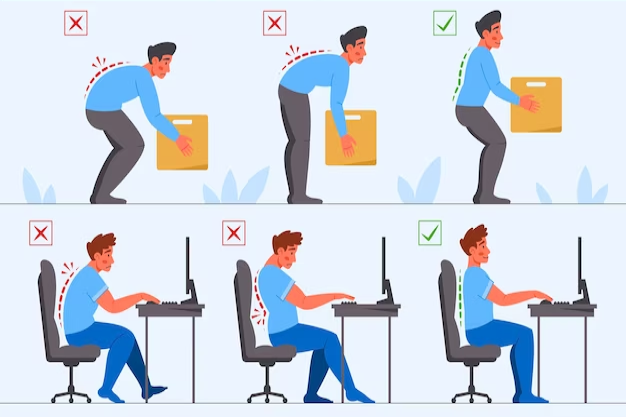Posture correction and ergonomics
Good posture and proper ergonomics are key to avoiding back pain, neck strain, eye fatigue, and overall body discomfort—especially if you spend long hours sitting or working at a desk. Maintaining a straight spine, relaxed shoulders, and aligned hips reduces pressure on joints and muscles, improving circulation, breathing, and energy levels throughout the day. Poor posture over time can also contribute to issues like spinal misalignment, reduced flexibility, and decreased productivity.
Ergonomics goes beyond just sitting right; it’s about designing your entire workspace to support your body’s natural position and movements. Use an adjustable chair with lumbar support, position your screen at eye level to avoid neck strain, and ensure your keyboard and mouse are within easy reach to prevent wrist and shoulder tension. Take short breaks every 30–60 minutes to stretch or walk, and consider tools like a footrest, standing desk, or ergonomic accessories. Small, consistent changes in your environment can lead to major improvements in comfort, focus, and long-term physical health.






